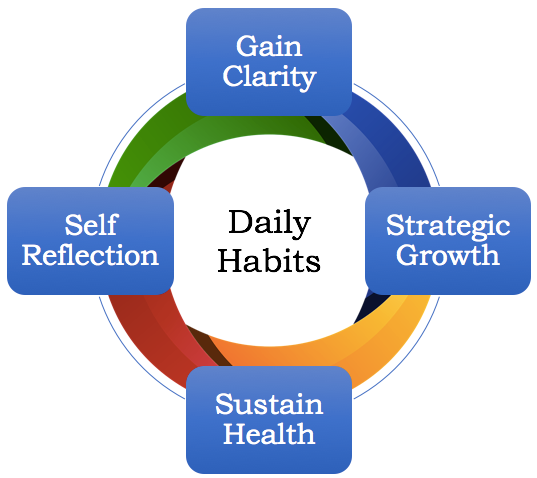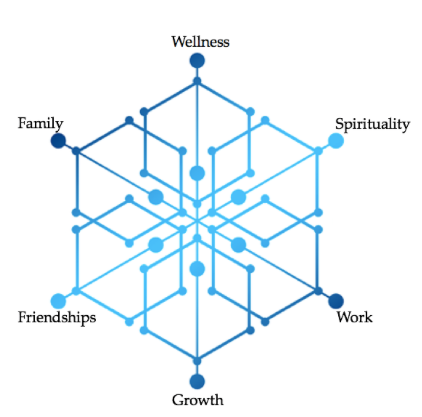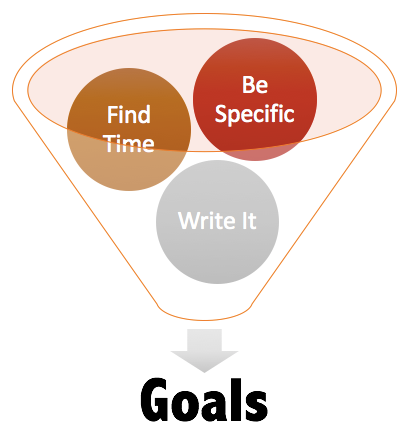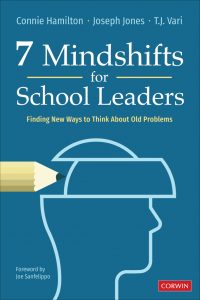
#SH302: Making Connections–PRC is a Model for Building Your Network in Business and Life

Brooklyn is where I primarily developed. I had an opportunity to make records and perform here and there, and I started networking with the right people in the right places. ~ Busta Rhymes
Think outside the box is a common, if not overused, phrase, intended to encourage creativity and innovation. Although the notion is well-meaning, we contend that, at times, in order to think outside the box, you have to think outside yourself and network with colleagues and friends to make unprecedented gains. The greatest leaders and thinkers of all time were well connected individuals who knew the power of relationships for making positive changes in the world. The concept of networking is sometimes looked at through through a skeptical lens as something fake or even sleazy–a tacky way to get something from other people. But great leaders see the power of connection and look beyond the suspiciousness of any desire to connect with new people. They associate the act of connecting with a simple exchange of information and ideas among like-minded people who share a common interest in business and life. Relational leaders are always trying to build their personal and professional network because they know that the benefits outweigh the time it takes to get to know so many people at a deeply connected level.
“A mountain of research shows that professional networks lead to more job and business opportunities, broader and deeper knowledge, improved capacity to innovate, faster advancement, and greater status and authority” (Casciaro, Gino, & Kouchaki, 2016). Leaders who know how to make broad and deep connections with a diverse group of people have an advantage over those who keep a smaller network.
In fact, some studies have confirmed that success in a position actually depends on the person’s ability to connect with the right people within and outside the organization (Casciaro, Gino, & Kouchaki, 2016). This means that if you can’t connect with people, you’re likely to suffer from the onset of slow, stalled, or insignificant impact. If you’re reading this blog, working to lead better and grow faster, that’s not what you want. The good news is that we never introduce topics that you can’t get better at with simple steps.
Leaders can learn how to network, how to make connections with the right people, and how to do so even better, faster, and with more efficacy. Check out our three-part model that we use for making strong connections for leadership growth and business development: Plan, Reach Out, Connect (PRC).
Plan—take time to think about who the people are before you decide to reach out.
The first step in our model for making connections is to take an inventory of the people you know who can help with the current project you’re managing and make a list of them. This combines two things that we love at TheSchoolHouse302: planning and making lists. Both are among the most effective tools that leaders have at their fingertips, but, unfortunately, these tools aren’t used often enough. And they’re the simplest tools we know of–taking time to plan and listing people or objectives. (Note: We delineate between lists of moving parts and to-do lists, and we advocate for the former).
Who are the most important people to help with the current demands?
This list of individuals should include people who you know directly or you have just a couple of degrees of separation from. A friend of a friend is a powerful way to grow your network and avoid some of the awkwardness typically associated with a brand new introduction. This is also a great way to tap into the expertise of an acquaintance who may work in a different industry. When we heard from Ted Fujimoto, this was one of his personal leadership development strategies–connecting with people in industries different than his.
Who do you need to support the vision and goals to move the work forward?
This thought process of identifying people beyond your common list of co-workers and friends is designed to give you additional perspective. For example, when we wanted to learn different ways to manage beyond the traditional educational way, we called on a dear friend who is a six-sigma black belt to help introduce us to another world of management. The point is that your vision and goals can be supported by advice from your network, and the voices you hear from don’t have to be in your field–they can be far from it. In fact, the more diversity you have on your panel of advisers the better, which is why being connected makes sense for leaders who want to move the work forward.
Technical Tip and Easy Next Step: David Burkus, author of Friend of a Friend, tells his readers that you don’t necessarily need to connect with new people. You can reconnect with old friends or think differently about the value of the connections you already have. As you think about the important people you need in your life to support your vision, try connecting with a “dormant” or weak relationship that you already have (Burkus, 2018). Connect with that person, which is easier than making a brand new connection, and set up a time to talk.
Reach Out—be sure to capitalize on your network by reaching out to others.
Reaching out is a mindset that actually requires a level of humility and respect. In essence, reaching out sends the message that you need others, value their input, and desire their perspective. Once you’ve identified a few people to connect with, simply contact them and be specific with what you need or want. We’ve found that most people love to share their knowledge and experiences.
How do you connect with people you know and don’t know to build the relationships you need?
Once you have an open mind toward connecting with others, your connection antenna will always be up and sensitive to potential relationships. This level of sensitivity will make it very easy for you to reach out and seek advice. One powerful way to connect is by leveraging online networking sites that are designed to connect people. Consider how Twitter has evolved into a powerful networking tool for a variety of industries. Many educators have powerfully leveraged Twitter to learn and grow from other educators from around the globe.
How do you leverage access to others in a connection economy?
The term connection economy is often attributed to Seth Godin and simply means that value is created through meaningful connections. This is incredibly powerful when we consider social media and the ability to connect with people online in a variety of different ways and through different platforms. Social and business networking sites, such as Twitter and Facebook, are powerful ways to connect with a host of people from around the world.
Technical Tip and Easy Next Step: Evan Baehr, coauthor of Get Backed, says that if you’re interest is in raising capital, establish a trusting relationship first–raise the relationship, then the money. And, if your desire is to get funded, ask for advice rather than cash. As you think about reaching out to make your next connection, for funding or not, don’t just think about who you want to add to your network but rather who you already know who might introduce you to someone new. “Trust is often translated across common friends” (Baehr, 2016). An easy next step is to reach out to someone who can reach out to someone with whom you wish to make a connection. Build the bridge first, make the connection, and ask for advice.
Connect—use emotional intelligence to truly connect with yourself and other people.
Simply put, leaders who know how to manage their emotions and the emotional reactions of others are more effective and better at reaching the goals of the organization (Boyatzis & McKee, 2005). It’s a critical leadership competency that leaders are aware of their own emotional needs and expressions as well as the needs and expressions of the team. Leaders who know how to be sensitive while pushing the team toward a goal are always more successful than those who care only about the goal and forget about the people.
Why is emotional intelligence an important leadership characteristic?
Goleman, Boyatzis, and McKee (2013) claim that the major difference between leaders who care only about winning and leaders who truly connect with people is whether or not they poses dissonant versus resonant leadership qualities. Dissonant leaders are insensitive while resonant leaders are attuned to the feelings and emotions of the people. The difference in outcomes in terms of organizational objectives and success is that the dissonant leadership style leads to poor performance and the resonant leader garners achievement through positive interactions with others.
Why should leaders use emotional intelligence to connect with themselves and others?
Goleman (2005) found that the emotionally intelligent leader knows their own emotional state, manages their emotions and the emotions of others, and handles relationships in a positive way. Using this type of intelligence to connect with yourself and your team of people builds trust and improves relationships through empathy. Leaders have to know their people to make gains and to tap into the specific skills that each individual can bring to the table when the team is at its peak emotional, social, and physical health. The best leaders take care of their people so that the people can take care of the organization.
Technical Tip and Easy Next Step: The good news is that emotional intelligence can be learned and improved. Once thought to be fixed, most intellectual constructs–smarts, social skills, self-efficacy, etc–can be developed through learning and growth opportunities. To improve your emotional intelligence, read more about it. Susan David, author of Emotional Agility, says that you need to understand as much as you can about emotional intelligence to be better at it, including three very specific technical improvements that anyone can make: 1. Improve your emotional vocabulary, 2. Define the intensity of your emotions, and 3. Write them down. Start today with an easy next step. Pick up a recently released book, maybe Emotional Agility or Emotional Intelligence 2.0, to increase your ability to describe your emotional state and that of others. Then, journal about your daily experiences with the ups and downs that we all experience and have to manage at work regarding our team. This will allow you to solidify the new and improved relationships you’re establishing as your plan to make connections and reach out to build your network.
The final word on making connections is that the relationships you’re building are not just for your own support but also so that you can have the impact and reach that you desire as a leader. Heed the advice from the Dale Carnegie Training institute:
Meet new people–meet as many of them as you can. Don’t be judgmental about it. Don’t find a way to cancel a lunch with a friend of a friend just because you don’t see how that person can be of help to you. On the contrary, that’s a good reason for going through with the meeting. You don’t see how people can help you, but after you meet them, your eyes might be opened. Or maybe they can’t help you now, but when conditions change, that fact might change, too. Finally, there’s always the possibility that a class act such as you might be able to help them. (2011)
The definition of leadership is influence, and by making connections, you can expand your influence. By expanding your influence, you can be helpful to more people, and that’s one of the most important characteristics of any great leader–the desire to help others.
That’s TheSchoolHouse302 model for making connections, which is a clear way to help you lead better and grow faster. We hope that you use our technical tips and take the easy next steps in your life and work so that your relationships are strong and you’re moving quickly toward your goals. If you want more support with learning how to network for better connections for yourself or the leaders in your organization, don’t hesitate to contact us, we can help.
Let us know what you think of this #SH302 post with a like, follow, or comment. Find us on Twitter, YouTube, iTunes, Facebook, & SoundCould. And if you want one simple model for leading better and growing faster per month, follow this blog by entering your email at the top right of the screen.
TheSchoolHouse302 is about getting to simple by maximizing effective research-based strategies that empower individuals to lead better and grow faster.
References
Baehr, E. (2016). Startups need relationships before they ask for money. Harvard Business Review.
Boyatzis, R. & McKee, A. (2005).. Boston: Harvard Business School Publishing.
Burkus, D. (2018). Making time for networking as a working parent. Harvard Business Review.
Casciaro, T., Gino, F. & Kouchaki, M. (2016). Learn to love networking. Harvard Business Review.
Dale Carnegie Training. (2011). Make yourself unforgettable: How to become the person everyone remembers and no one can resist. New York: Simon & Schuster, Inc.
David, S. (2016). Emotional agility: Get unstuck, embrace change, and thrive in life and work. New York: Random House.
Goleman, D. (1995). Emotional intelligence: Why it can matter more than IQ. New York: Bantam Books.
Goleman, G., Boyatzis, R. & McKee A. (2013). Primal leadership, with a new preface by the authors: Unleashing the power of emotional intelligence. Boston: Harvard Business School Publishing.





 7 Mindshifts for School Leaders: Finding New Ways to Think About Old Problems.
7 Mindshifts for School Leaders: Finding New Ways to Think About Old Problems. 


